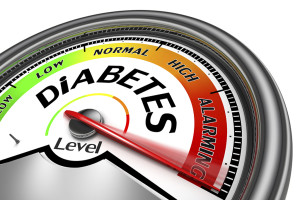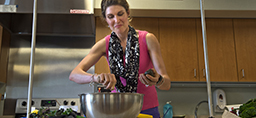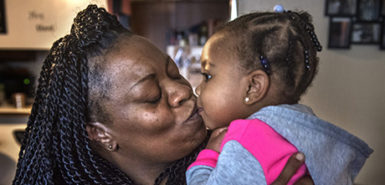
Minority groups in the United States are, in some cases, twice as likely as whites to develop diabetes, with blacks and American Indians at greatest risk, according to the American Diabetes Association.
The rates are alarming, particularly because diabetes is already one of the most prevalent chronic diseases among all races in the U.S., said Greg Deines, DO, division chief of diabetes and endocrinology at Spectrum Health Medical Group.
Diabetes is the seventh leading cause of death in the U.S., according to the Centers for Disease Control and Prevention.
If people don’t take steps now to prevent the disease, the U.S.—and the world— will face an even greater health crisis, Dr. Deines said.
A person’s risk factors are largely dependent on genetics and lifestyle, but the good news is there are many effective ways to gauge the risk and identify methods of prevention or disease management.
Diabetes risk factors
Minorities are at much greater risk of developing diabetes, according to the American Diabetes Association, which lists diabetes rates by race:
- 15.9 percent: American Indian/Alaska Native
- 13.2 percent: non-Hispanic black
- 12.8 percent: Hispanic
- 9 percent: Asian-American
- 7.6 percent: non-Hispanic white
Type 2 diabetes accounts for 95 percent of all diagnosed diabetes cases, according to the National Institute of Diabetes and Digestive and Kidney Diseases.
Certain factors may increase your risk of developing the disease:
- Age 45 or older
- Overweight or obese; body mass index of 25 or higher
- Family history of diabetes
- History of gestational diabetes
- High blood pressure
- High cholesterol
- Inactive lifestyle
- History of ovarian polyps
Once every three years, adults who find one or more risk factors applying to them should be screened for diabetes. This can be done with a blood test. At-risk people can improve their situation through proper diet and exercise, which should lead to weight loss. Consistent monitoring of weight can ensure long-term success.
People should also undergo regular health screenings and work with their primary care physician to identify steps that are proactive, rather than reactive. It’s better to address diabetes early to avoid complications down the road, Dr. Deines said.
“The reality is, in the 21st century, these things are preventable,” he said.
Jose Reyna, Director of Community Health Programs at Spectrum Health Healthier Communities, said it’s important for people with diabetes to take steps to effectively manage their disease.
Proper management of chronic disease is more cost-effective not just for the individual, but for society, too. And it’ll ultimately improve quality of life, Reyna said.
Spectrum Health provides programs that help patients from all walks of life, including people who are medically underserved:
- Programa Puente is for Hispanics ages 18 and older. It offers biometric screenings and risk assessments, as well as interventions such as instruction in physical activity, nutrition and general health literacy. People may remain in the program for three years, during which time their progress is continuously monitored.
- The Core Health Diabetes Program, available to medically underserved patients who have been diagnosed with diabetes and/or heart failure, teaches people how to self-manage their chronic disease. A registered nurse and community health worker teach patients about all aspects of diabetes and how to set health-improvement goals and manage risk factors. It also connects participants to community resources.
- Healthier Communities also offers a variety of ongoing diabetes education, prevention classes and support groups.
Reyna said the programs have resulted in “significant” reductions—in some cases, up to 80 percent—in the number of participants who have needed hospitalization or the emergency department. The programs also offer services in Spanish.
He encourages people to reach out and use the programs, as they offer a safe place to learn more about making positive health changes.
“We’ll walk with them every step of the way,” Reyna said.

 /a>
/a>
 /a>
/a>
 /a>
/a>